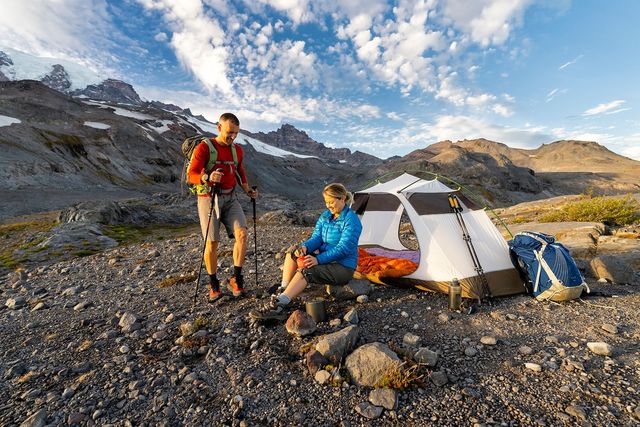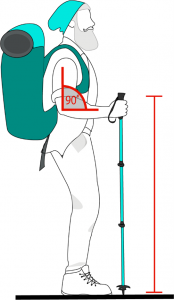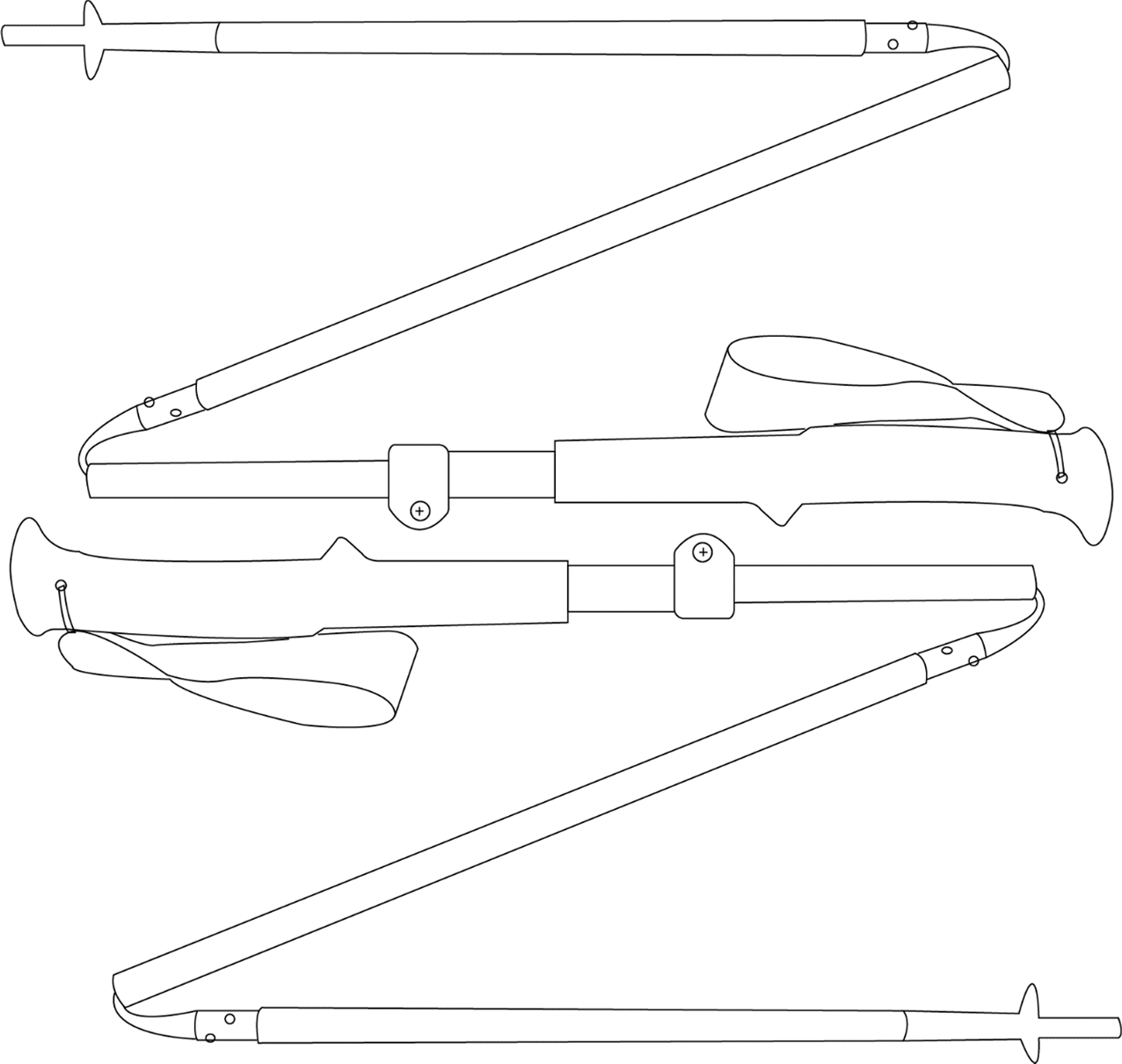
Hiking Poles: Do I Need Them and How To Choose?
There are a lot of questions, misconceptions, and divisive opinions on hiking poles. My legs work fine, why should I use hiking poles? When should I use my rubber tips vs my carbide tips? Why are there so many different types of hiking poles? There is almost an overwhelming amount of variety when it comes to poles. This guide will teach you about the basics of hiking poles and what to think about when grabbing a pair for yourself. After reading this article, it will be far easier to distinguish the features of the products from leading hiking pole brands like Leki, Masters and Black Diamond.
Are hiking poles worth it? When do you need Hiking Poles and why?
A common misconception among beginner hikers is that hiking poles are only used by those with weak knees, this is simply untrue. Although hiking poles may be useful to someone with compromised knee strength, hikers of all sizes, shapes and experience levels use hiking poles. At K2 Base Camp when customers come in-store, to showcase the effects hiking poles have, we use a demonstration. We ask customers to stand on scales with and without poles. Often, you will see a 10k weight difference between the two examples, that is because hiking poles help distribute the weight you carry in your legs. If you are carrying a heavy pack or walking long distances poles can be a great assistance. The trade-off of the distribution of weight is that you are more engaged in your arms while hiking, taking it from a lower-body workout to a full-body workout. Another use for Hiking Poles is that they assist with balance. For technical terrain where a lot of balance is required, like water crossings, hiking poles are super helpful in preventing fatigue. Ultimately hiking poles come in handy on most trails, especially as they get longer and more challenging. They are excellent support for those who have injuries or weakness in their legs, but also for those wanting extra support in balance or with weight.
How to choose hiking poles?
You have decided you need hiking poles and you are ready to buy them. Great! There are a couple of significant factors that you need to consider before you go and shop for a hiking pole. We outlined the two major ones below for you; hiking pole size and design.

What size hiking pole do I need?
When it comes to picking the right poles for you, the most important thing is to figure out what pole height is correct for you. There are a few ways to figure this out.
Most hiking poles will come with suggested lengths for your height, but from our experience at K2 Base Camp, those guides can be deceiving. The best indicator of whether the pole is appropriately fitted to you is the 90-degree rule.
The 90-degree rule means that when you’re standing straight with your hiking poles while resting (arms by your side, not swinging), there should be a 90-degree angle in the bend between your forearm and bicep. You should also ensure you have a little extra wiggle room in terms of adjustable height.
If you are shopping online for hiking poles, we suggest measuring from your hands, while your arm is set to that 90-degree angle, to the floor to get an accurate reading of which height you should be looking at.
What is the correct hiking pole design for me?
Most hiking poles are pretty straightforward when they are extended and in use, it's when you fold them away that you will really notice the differences. There is a range of materials, hardware and connecting joints that go into the design of hiking poles, which will impact aspects such as weight, durability and efficiency of use. We’ve broken down the key areas we think will be of most use to you as a consumer, to make a well-informed decision on your purchase. Below you will find; handle materials, pole material, telescopic or poles, lock mechanisms and accessories.
Handle Material
Handle material will ensure the degree of comfort you will experience holding your hiking poles.
Foam – The softest material and most popular. Foam is lightweight and sweat-absorbent, making it great for warmer climates.
Cork – Over time, this material will mould to your hand and is the best choice for hot climates as it is both sweat-absorbent and breathable.
Rubber – Very durable and tough, rubber is a great option for cold climates.
We suggest sticking to your foam and cork handles as they will suffice in most climates, but especially in our Sub Tropical Queensland weather. If you are spending a lot of time in colder climates, snow trekking, mountaineering and so forth, you may find the rubber handles more appropriate there, however, foam and cork will also work great in those conditions making them far more versatile.
Hiking Pole Body Material: Carbon vs Aluminium
Carbon Poles - are designed to be lightweight and flexible. The weaving design of carbon fibre makes it great at shock absorption. The trade-off for a lightweight material is always durability and price. Carbon Fibre poles on average will cost a little more and are more susceptible to damage under stress. With all this in mind, we suggest that for ultra-light hikers, trail runners or those conscious of their pack’s weight, carbon fibre poles are an excellent choice.
Aluminium Poles- are durable, making them a reliable go-to favourite for many hikers. Under vigorous strain and stress, Aluminium shines. In comparison to other materials, they may not be as shock-absorbent, but aluminium’s durability means it is unlikely to break under strain. Another added perk of aluminium poles is that they are usually more cost-effective than their counterparts. For the durability and reliability of aluminium, you sacrifice weight. All things considered, we recommend aluminium poles for those new to poles, those who need more durability from their poles and price-conscious hikers.

Folding Type: Telescopic vs Z Hiking Poles
When you hear telescopic or Z poles it refers to how the poles pack down. Telescopic poles are made from tubular pole sections, designed to slide into one another. Z Poles are made of three sections of a tubular pole connected with cord and rubber that allows the hiking poles to be stored in a Z-like shape when not in use.
The Z poles tend to fold down smaller than telescopic poles but are more prone to damage due to user error. Telescopic poles may not fold down as small as Z poles, but most hiking packs are designed to accommodate telescopic poles over the Z poles.
If you want to know more about the topic, you can check our article regarding Telescopic vs Z Hiking Poles
Lock Mechanisms
The lock mechanism ensures that your hiking pole can go from folded up and away, to extended and secure. Knowing how to use your lock mechanism correctly is super important, as you’ll need to operate them often, but they also can be super fiddly. There are 4 types of lock mechanisms you are likely to run into:
- Twist Lock
- Flick Lock
- Slide Lock
- Push Button
It’s common for a pole to have 1-2 different kinds of lock mechanisms. If you’re buying in-store directly from K2 Base Camp, we recommend asking our friendly team for a demonstration on how to use your pole’s lock mechanisms correctly. But for those unable to come into the store all hiking poles will come with instructions on how to use them, or YouTube is also a great resource with plenty of content on how to use your poles!
Accessories
Accessories allow you to fine-tune your hiking poles for specific terrain and give you a bunch of versatility. The main accessories to worry about when purchasing hiking poles are your tips and baskets.
Hiking Pole Tips
Carbide Tips – Durable and versatile, these tips will give you optimal grip on a variety of surfaces. Ideal for rugged terrain. Do be aware some tracks may have regulations around their use, as they can leave more impacts on their environment, for example, they are banned on Machu Picchu due to the fragility of the historical site.
Rubber Tips – Great for shock absorption and sensitive ecosystems. Concrete, hard rock and flat easy to traverse terrain are great examples of places rubber tips come in handy. Though you won’t get as much grip making them less suitable for mud and snow.
Hiking Pole Baskets
Mud Baskets – if the terrain has a lot of mud or deep grass, mud baskets will help prevent slipping and sinking.
Snow Baskets – are designed to float atop snow and are wider than mud baskets.
Best Hiking Poles of 2023 | K2 Team Picks
Looking after best hiking poles of 2022. Depending on the occasion see below K2 Base Camp Team's picks for this year. If you would like to check out our full range, you can click to this Hiking Poles link.
